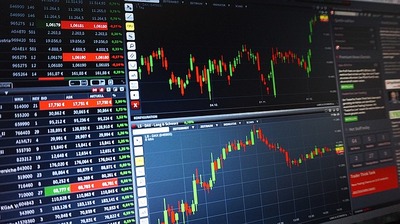Investing in dividend ETFs (Exchange-Traded Funds) can be an effective way to generate passive income and achieve long-term growth. However, one critical factor that can significantly influence your returns is the expense ratio. The expense ratio is the annual fee that ETFs charge their shareholders, expressed as a percentage of the fund’s average assets under management (AUM). This article explores the impact of expense ratios on dividend ETF returns, how to evaluate them, and why it matters for your investment strategy.

Understanding Expense Ratios
What Is an Expense Ratio?
- Definition: The expense ratio represents the total annual operating expenses of an ETF, divided by the average dollar value of its assets under management.
- Components: It includes management fees, administrative fees, and other operational costs.
Types of Expense Ratios
- Gross Expense Ratio: Reflects the total operating expenses before any fee waivers or reimbursements.
- Net Expense Ratio: Reflects the operating expenses after fee waivers or reimbursements.
How Expense Ratios Are Charged
- Deducted from Returns: Expense ratios are deducted from the ETF’s returns, which means they directly reduce the income and capital gains you receive from the investment.
The Impact of Expense Ratios on Returns
Reduced Net Returns
- Lower Income: High expense ratios can significantly reduce the net income received from dividends.
- Erosion of Gains: Over time, higher fees can erode capital gains, impacting the overall growth of your investment.
Compounding Effect
- Long-Term Impact: The compounding effect of high expense ratios over many years can lead to substantial differences in final portfolio value.
- Example: An ETF with a 0.5% expense ratio vs. one with a 0.1% expense ratio can have vastly different outcomes over a 20-30 year investment horizon.
Performance Drag
- Hindering Growth: High expense ratios can act as a performance drag, making it harder for the ETF to outperform its benchmark or peers with lower fees.
- Investor Returns: Investors in high-cost ETFs may receive lower returns compared to those in low-cost ETFs, even if both ETFs hold similar assets.
Evaluating Expense Ratios
Comparing ETFs
- Benchmarking: Compare the expense ratios of similar dividend ETFs to find the most cost-effective options.
- Industry Standards: Look for ETFs that have expense ratios below the industry average for dividend-focused funds.
Assessing Value
- Total Cost vs. Benefit: Consider whether the higher expense ratio is justified by superior management, better performance, or additional services.
- Net Returns: Focus on net returns after expenses, as these reflect the actual performance of your investment.
Historical Performance
- Consistency: Analyse the ETF’s historical performance to see if it consistently delivers returns that justify its expense ratio.
- Risk-Adjusted Returns: Evaluate risk-adjusted returns to understand how well the ETF compensates for its costs.
Why Expense Ratios Matter
Cost Efficiency
- Maximizing Returns: Lower expense ratios help maximize your returns by minimizing the costs that eat into your investment gains.
- Efficient Investing: Cost-efficient ETFs allow you to retain more of your income and capital gains.
Long-Term Wealth Accumulation
- Compounding Benefits: Lower costs enhance the benefits of compounding, leading to greater wealth accumulation over the long term.
- Retirement Savings: For long-term goals like retirement, minimizing fees is crucial to ensuring your savings grow optimally.
Transparency and Simplicity
- Clear Costs: Expense ratios provide a clear and simple way to understand the ongoing costs of your investment.
- Informed Decisions: Knowing the expense ratios helps you make informed decisions when selecting ETFs for your portfolio.
Conclusion
Expense ratios are a critical factor in evaluating dividend ETFs, as they directly impact your net returns. By choosing ETFs with lower expense ratios, you can maximize your income and capital gains, benefiting from the full potential of your investment. While it is essential to consider other factors such as performance, diversification, and risk, prioritizing low-cost ETFs can significantly enhance your long-term investment success.
When building your dividend ETF portfolio, take the time to compare expense ratios, assess their impact on historical performance, and ensure that you are getting the best value for your money. By doing so, you can achieve a more cost-efficient and profitable investment strategy.

